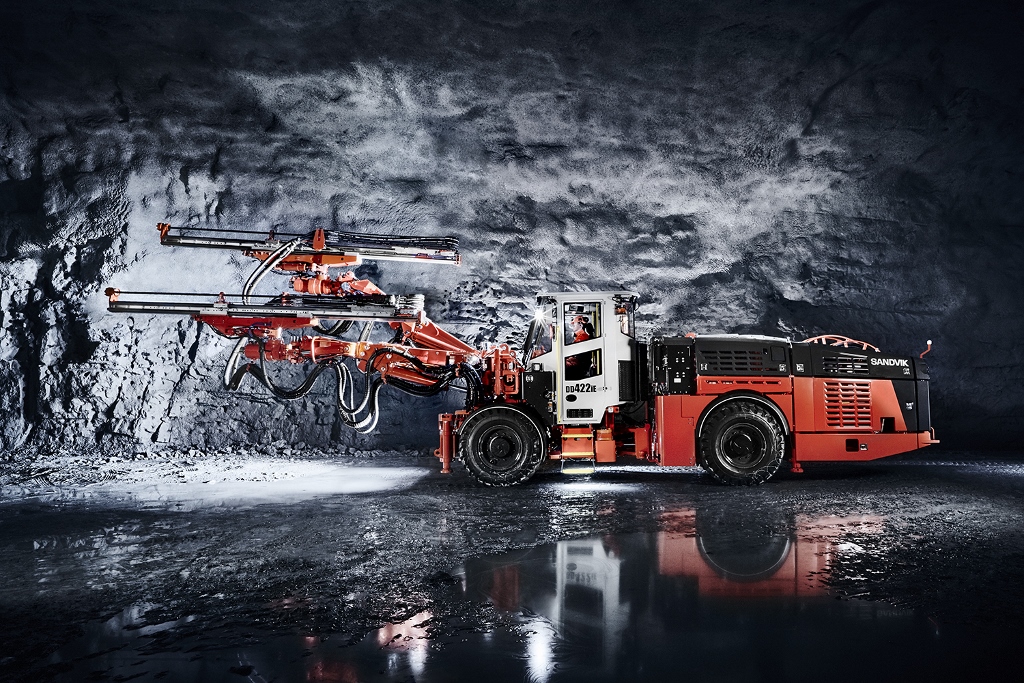
As mining companies continue to shift away from dirtier, less efficient practices, electrification is one of the first things on their to-do list. For many, reducing carbon emissions on-site and throughout operations outside of mining is critical to attracting capital and remaining competitive. The rising costs of fuel and complex maintenance for combustion engines have given companies an incentive for change, and miners are stocking up on battery-powered trucks for hauling, transportation, and other tools that previously used diesel or gasoline to get the job done.
A Scandinavian Approach
Swedish equipment manufacturer Sandvik now expects that the market for battery-electric underground mining equipment will grow at a faster clip in two to three years. The dual goals of lowering emissions and cutting costs give these companies plenty of incentives to make the switch, with investors also looking on eagerly to see what companies are doing with respect to the all-important environmental, social, and governmental principles.
Sandvik’s mining business head said that the company could sell more electric than diesel-driven underground mining equipment in the coming ten years. Epiroc and Caterpillar, two of Sandvik’s main competitors and some of the largest suppliers in the world for the mining industry, will also be going head to head with the company to supply the tools necessary for the electrification coming down the line, beginning now.
Sandvik claims that its approximately 30 battery-electric loaders and trucks operating in underground mine production is the largest amount in current operation, more than any of its competitors. Still, this amount is less than 0.5% of its total fleet and shows how much runway there still is for this market segment to expand for equipment suppliers. As it continues to gain pace, it will drive much of the new equipment sales over the coming decade. Henrik Ager, head of Sandvik Mining and Rock Solutions, said, “In the past two years, we have gone from thinking that electrification might turn into a great technology shift to becoming certain that’s where we’re heading.”
He said that in two to three years, electric machinery should be fully proven to work in mines and be part of the discussions for all procurement. Approximately 60% of an underground mine’s energy consumption comes from infrastructure, mainly electrified. Still, the rest is consumed by loaders and trucks, transporting and hauling heavy materials from the site to refinement centers and processing plants or to stockpiles. Those loaders and trucks still primarily run on diesel, carrying up to 65 tonnes of rock at a time.
Good for the Environment, Good for Investment
For investment bank UBS, the electrification of the industry is not only an environmental benefit for all stakeholders but will bring savings for mining companies as well. Analyst Guillermo Peigneux Lojo said, “In the years to come we shall see an accelerated replacement cycle for especially underground mining equipment, although surface equipment will also benefit from solid growth rates.”
Barriers still remain until full adoption of electric vehicles and fully electric mines are the new normal. Battery-driven loaders and trucks are more expensive to buy, making the upfront costs unpalatable for some mining companies at the moment. However, down the road, the benefits are numerous. Savings on ventilation and cooling, high costs in underground mines can make it beneficial and profitable for mines to go completely electric right now.
Major mining companies have already begun the process of electrification at many of their mines. Newmont’s (NYSE:NEM) Borden gold mine and New Gold’s (TSX:NGD) Afton mine currently use Sandvik’s battery-electric equipment in their operations. The loaders and trucks, as well as some of the lighter equipment, use lithium-ion batteries, a technology that allows for faster charging and higher battery density, leading to more prolonged use between charges, an essential factor for rapid adoptions.
Mirroring The Ethos of Tesla and Elon Musk
Elon Musk’s Tesla has created a similar business model, focusing on bringing battery technology to the forefront of the mission, and bringing down the cost and effectiveness of the batteries in its vehicles. Sandvik’s vision is to do the same; the company is building around the battery instead of starting with the vehicle itself. The research and development costs are much lower, and the equipment being used is already efficient and effective.
“It’s the Tesla parallel. That is what they have done, and it’s much better,” Ager added.



 Follow us on Twitter
Follow us on Twitter Become our facebook fan
Become our facebook fan










Comments are closed.